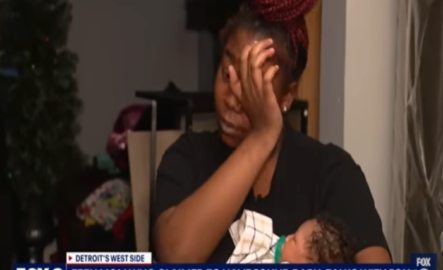Viola Ford Fletcher, the oldest surviving witness of the Tulsa Race Massacre, passed away on Monday at the age of 111. Her grandson, Ike Howard, confirmed the news to CNN.
“She loved life, she loved people,” Howard stated, noting her “beautiful smile.”
The news was also confirmed by Oklahoma State Senator Regina Goodwin, who was with the family at a local hospital.
Known to many as “Mother Fletcher,” she had been interviewed by the media numerous times in recent years. She, along with other living survivors, had been actively involved in a lawsuit against the city of Tulsa and related departments. This legal action alleged that these entities were complicit in the 1921 massacre and that its effects continue to be felt today.
Lessie Benningfield Randle, also 111, is now the sole surviving person of the massacre. When Fletcher became ill shortly before her death, Randle, through her granddaughter LaDonna Penny, sent a message to the Fletcher family, saying: “She was sorry it was happening and that she loved her.”
Upon hearing the news of Fletcher’s passing, Randle reacted, “That breaks my heart. I will miss her dearly,” Penny reported to CNN.
“Mother Fletcher called my grandmother her little sister,” Penny said, as she reflected on her own relationship with Fletcher.
“It’s like I lost my grandmother,” Penny told CNN. “My heart is broken, I keep trying to stop crying.”
Fletcher’s brother, Hughes Van Ellis, known as “Uncle Redd” and also a survivor of the massacre, died earlier in October 2023 at the age of 102.
Their decades-long fight for reparations faced a setback in June 2024 when the Oklahoma Supreme Court dismissed a lawsuit from the survivors seeking compensation from the city for the damages incurred more than 100 years ago.
Damario Solomon-Simmons, the lead attorney for the survivors in their lawsuit, shared a personal reflection with CNN, stating, “When I think about Mother Fletcher, I don’t just see a historic figure or a symbol. I see a woman I sat with, prayed with, laughed with, and went to court with.”
“Spending this past Friday night by her hospital bed, I saw that Mother Fletcher didn’t talk like someone who was ready to go. She wasn’t done. She was tired—because this fight is exhausting — but her spirit was still in it,” Solomon-Simmons added.
In 2023, Fletcher teamed up with her grandson to write the memoir “Don’t Let Them Bury My Story.” The title really speaks to how she and her family felt the country was too quick to forget their history.
“As I grew up, I had to work with White people, but we didn’t dare mention that,” she said of the massacre. “I didn’t know why it happened, or why they would be so cruel to do a thing like that to the Black people.”
The Tulsa Race Massacre began on May 30, 1921, triggered by an incident involving Dick Rowland, a 19-year-old Black shoeshiner. After a teenage elevator operator screamed in a downtown building, Rowland fled, and rumors of a rape quickly spread. White Tulsans responded by forming a lynch mob, leading to Rowland’s arrest.
The escalating tension began when Black Tulsans arrived at the jail to protect Rowland, leading to scuffles. When a gun discharged, “All hell broke loose,” as then-Sheriff William McCullough recounted to Literary Digest.
The following day, May 31, 1921, a White mob unleashed destruction on Greenwood, Tulsa’s prosperous Black business district. Over 16 hours, approximately 35 blocks of the neighborhood were ravaged. Thousands of Black residents were arrested, while others were subjected to robbery, beatings, and murder.
The aftermath is documented in historic photos showing entire city blocks engulfed in fire and the bodies of Black people in the streets.
Compounding the devastation, insurance companies rejected numerous claims for property damage that would be worth tens of millions of dollars today. According to the Greenwood Cultural Center, this destruction included 1,256 homes and two Black hospitals.
Fletcher, a survivor of the massacre, later recounted that she “never got over” the experience. At the time of the event, she was only 7 years old.
She previously told CNN she still vividly recalls the terror of “people getting killed, houses, property, schools, churches, and stores getting destroyed with fire.”
She added, “It just stays with me, you know, just the fear. I have lived in Tulsa since but I don’t sleep all night living there.”
Over a century after the Tulsa Race Massacre, victims are still seeking justice.
In June, Tulsa’s mayor proposed a private trust exceeding $100 million as part of reparation plans, framed as a “road to repair” through local funding initiatives.
According to the announcement, this trust would be invested in three main areas: a housing fund, a cultural preservation fund, and a legacy fund dedicated to supporting education and local businesses in the area.
However, as reported by the Associated Press, the fund is not intended to provide direct financial payments to the survivors or their descendants.
READ ALSO: 109-year-old survivor of 1921 Tulsa Race Massacre is now the world’s oldest author










